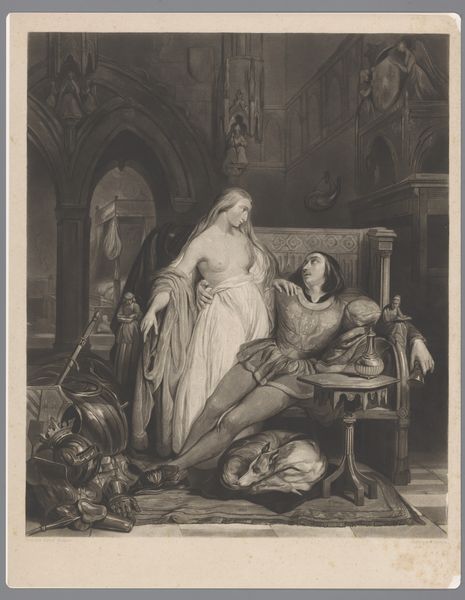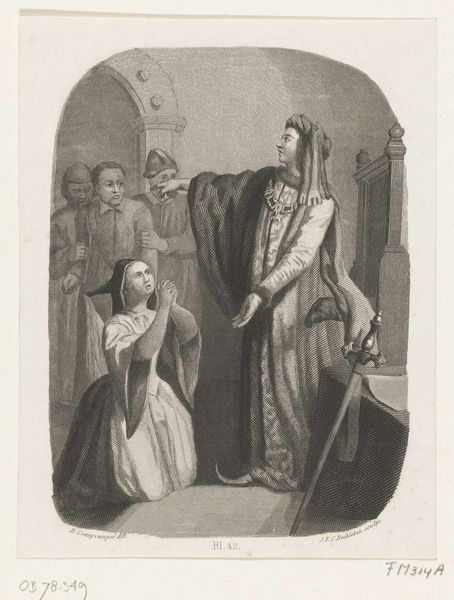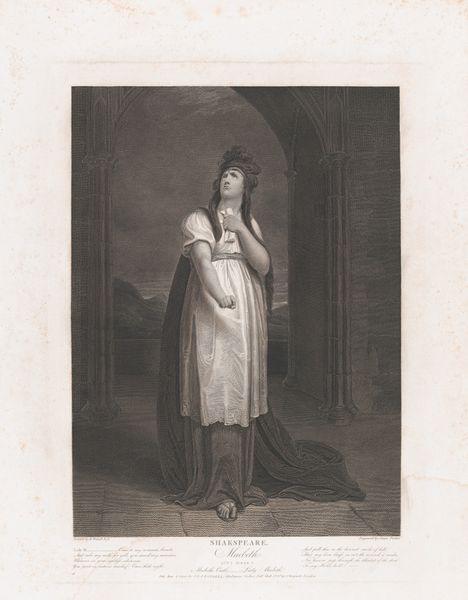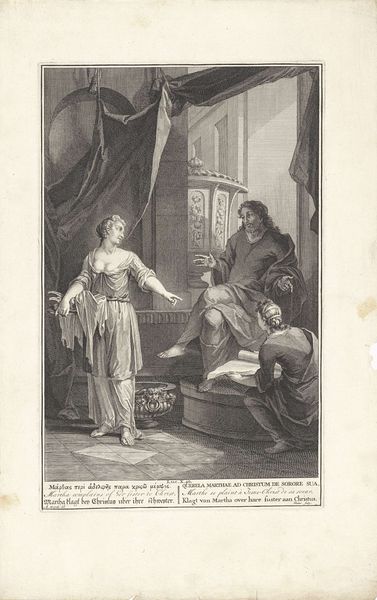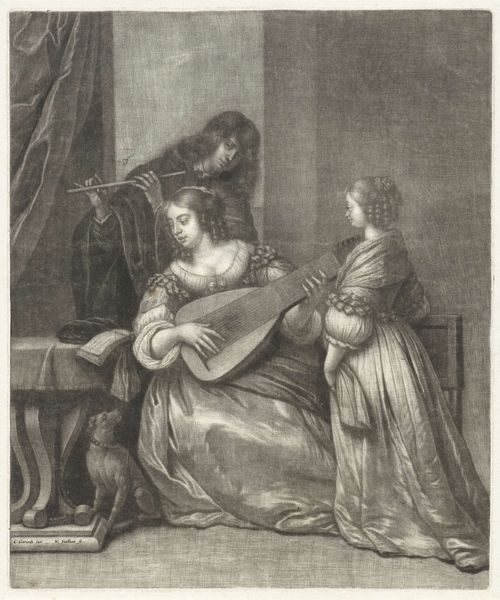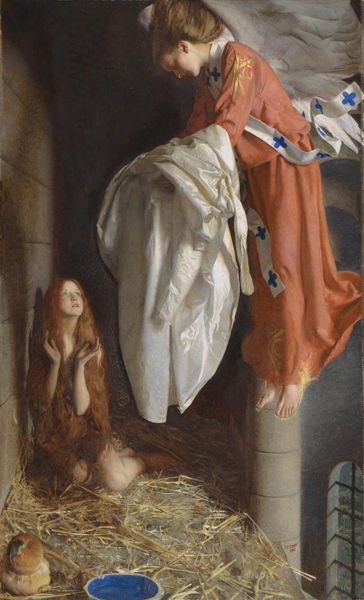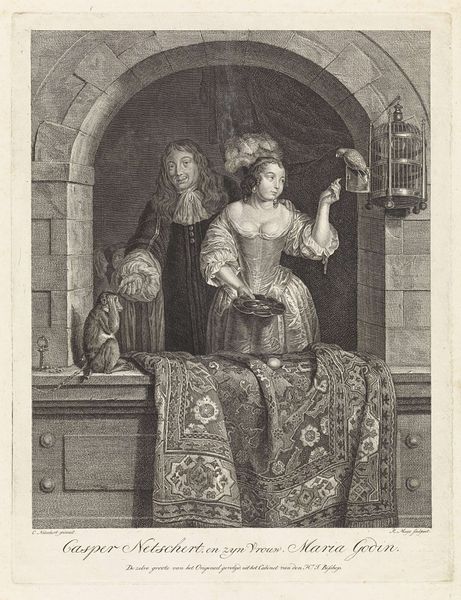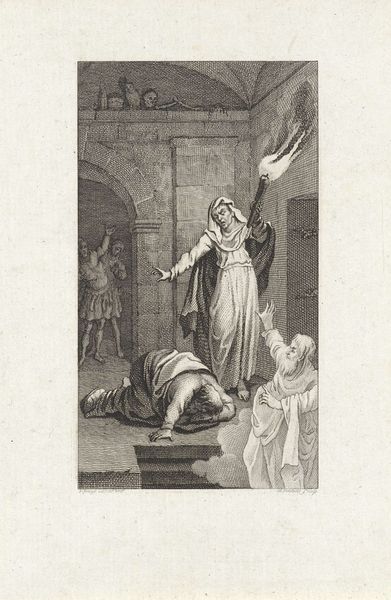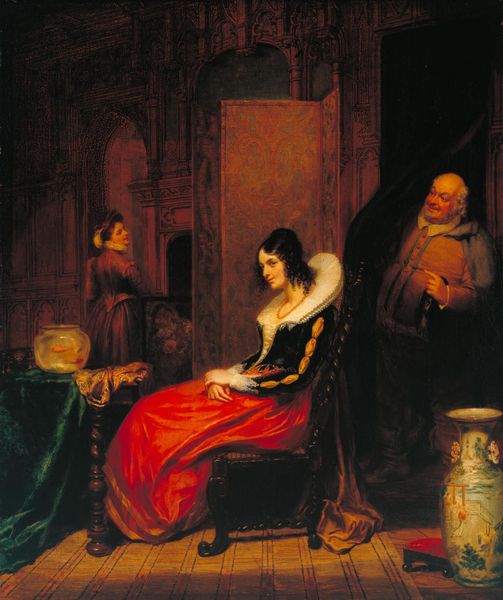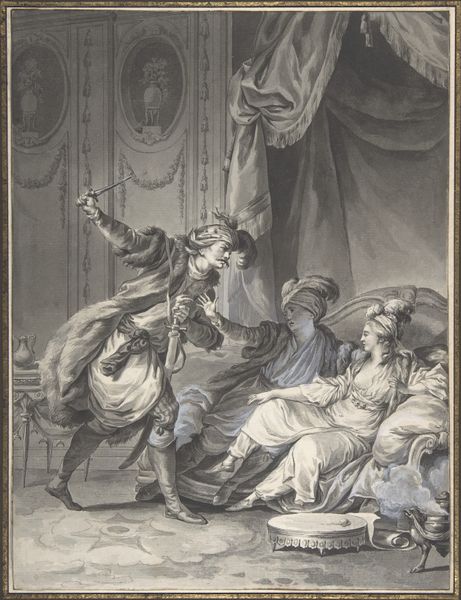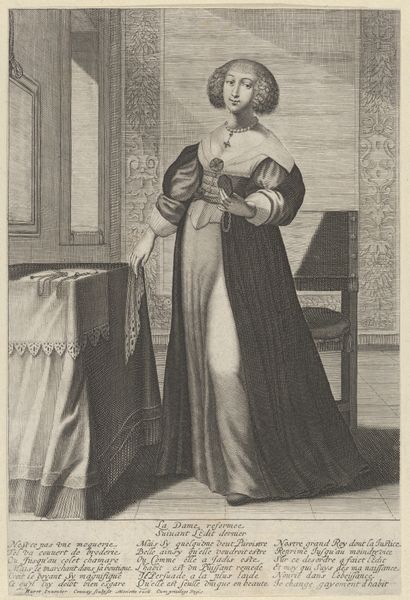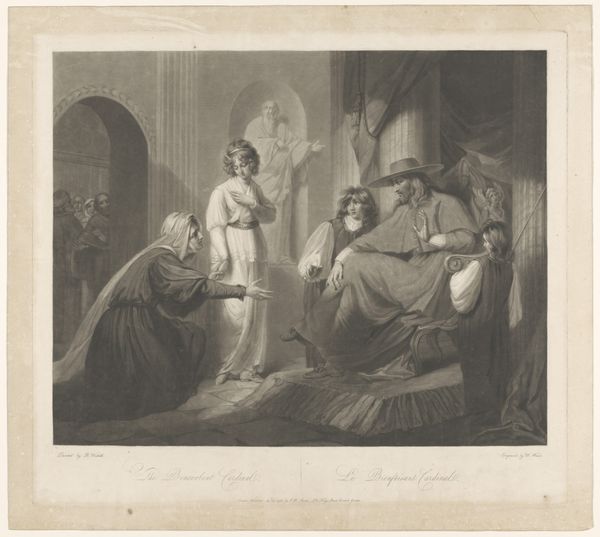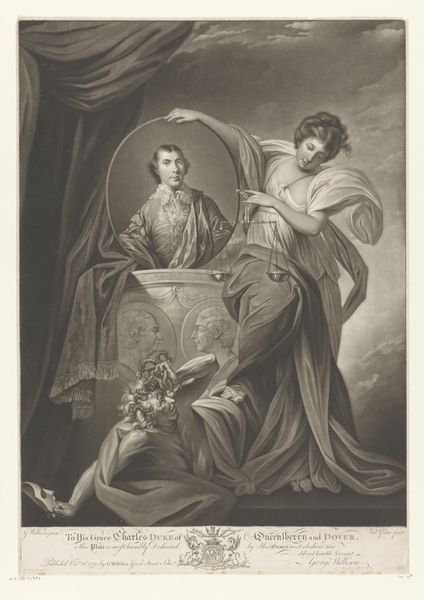
painting, oil-paint, canvas
#
narrative-art
#
painting
#
oil-paint
#
classical-realism
#
figuration
#
canvas
#
historical fashion
#
romanticism
#
19th century
#
history-painting
#
academic-art
#
portrait art
Dimensions: 124 cm (height) x 100 cm (width) (Netto), 129.5 cm (height) x 106.4 cm (width) x 4.6 cm (depth) (Brutto)
Curator: Ditlev Blunck's 1823 oil on canvas, "Christian IV's Vision at Rothenburg Castle," is on display here. It presents a dramatic scene. What is your first impression? Editor: Immediately, I see the intense contrast – both the light against the darkness, and the real versus the spectral. There’s a somber mood but with a touch of almost theatrical grandiosity. It’s compelling. Curator: It’s meant to be! Blunck aims to depict a pivotal moment in Danish history and to construct the mythology of Danish national identity around its rulers. He shows Christian IV kneeling in prayer when he receives a divine vision. Editor: The vision, specifically of Christ, literally floats above the earthly setting. That placement inherently reinforces established power structures; religion sanctioning monarchy. I'm interested in the context of this painting's creation, and its role in reinforcing the status quo. Curator: This work does serve a propagandistic function, depicting a king, nearly two centuries removed, as righteous, chosen by God, and intimately connected to Denmark's national destiny. The king, positioned below, is almost swallowed by shadow, emphasizing humility before the radiant apparition. Editor: I can't help but wonder how someone in Blunck’s era would've interpreted this, seeing the echoes of Romanticism in the use of light and the focus on spiritual experience, yet aware of the very real power dynamics being perpetuated. Is this king worthy of his 'divine' right, or is the painting an attempt to conceal deeper complexities within the monarchy's legacy? What's missing? Curator: The narrative is selective, of course. Blunck romanticizes and mythologizes, shaping a visual history aligned with specific political goals of the era when nationalistic sentiment was on the rise throughout Europe, and monarchies desperately needed to prove legitimacy. Editor: So, while on the surface, it’s a straightforward depiction of piety and divine mandate, when viewed critically, it raises far more intricate questions about how history, religion, and art become entwined to solidify authority. Curator: Indeed. Considering that is crucial to a full understanding of the piece. Editor: Thanks to that deeper perspective, the painting now holds significantly more meaning.
Comments
No comments
Be the first to comment and join the conversation on the ultimate creative platform.
